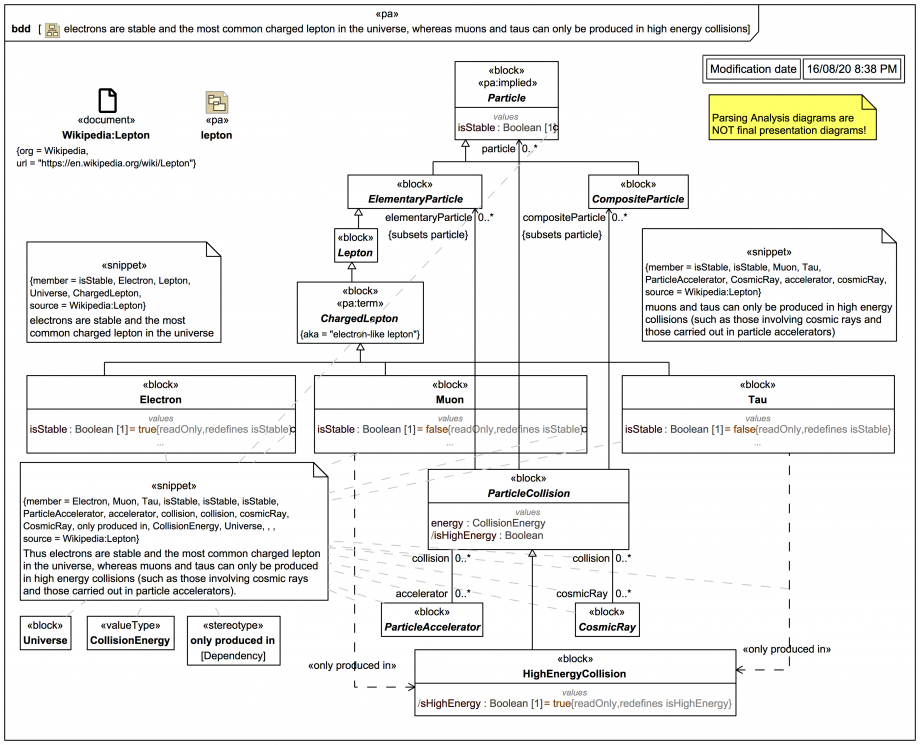Tags and keywords
Let's start with the high energy collision aspect. Presumably not all collisions are high energy, so there is a more abstract concept of ParticleCollision with some indication of energy:CollisionEnergy, and a derived indicator of whether it /isHighEnergy, although we have no threshold yet by which to judge that. We can however assert that a HighCollisionEnergy always has /isHighEnergy redefined to be 'true'.
There is nothing to assert that collisions only involve elementary particles. After all, some people like to call particle accelerators "atom smashers" - even if they don't usually do that - and we have already elicited a concept CompositeParticle (of which Atom is a special case).
So now an implied abstract base block Particle is introduced, where a ParticleCollision involves two or more particle:Particle, of which elementaryParticle and compositeParticle are only {subsets}.
We are told that 'electrons are stable'. Does the concept 'stable' apply to any Particle? If we know it at least applies to one kind of ElementaryParticle and it also applies to some kinds of CompositeParticle it would make sense to have isStable:Boolean live in the abstract base block Particle.
Let's get some help from another snippet on Positronium, which we know is a kind of composite particle:
Clearly the concept is quite general, so isStable:Boolean now indeed gets bumped up into Particle.
And there are some other value properties that have been collected so far only into ElementaryParticle that could perhaps also be promoted up into any Particle, such as mass:ParticleMass.
Let's pause though and do some tidying up next before incorporating too much that is not specific to leptons.


